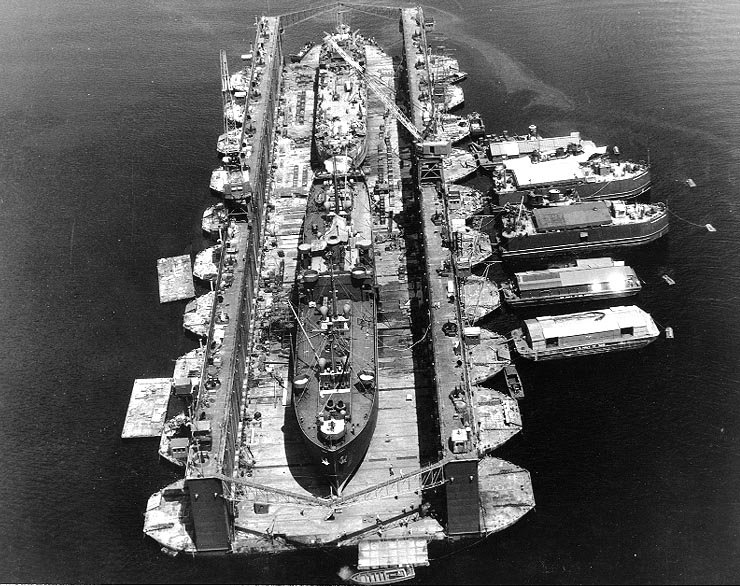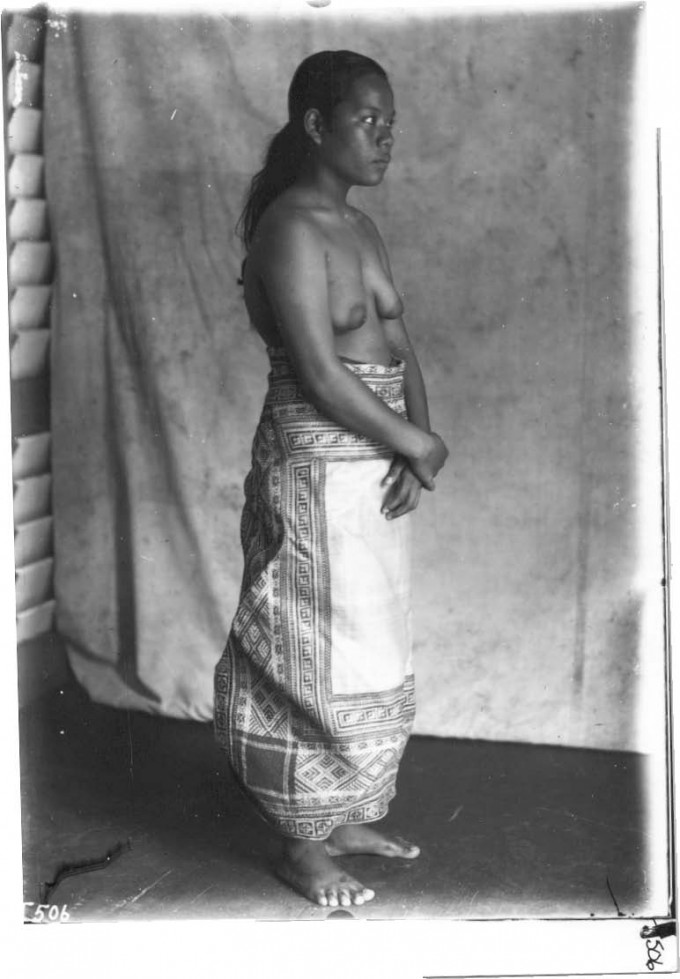|
ARDC-13
The ARDC-13 was a 2800-ton auxiliary floating drydock used for testing during the Able and Baker nuclear weapon A nuclear weapon is an explosive device that derives its destructive force from nuclear reactions, either fission (fission bomb) or a combination of fission and fusion reactions ( thermonuclear bomb), producing a nuclear explosion. Both bom ... tests of Operation Crossroads in the Bikini Atoll. It was used to determine the effects of the atomic bomb phenomena on land-based concrete structures. The final report on ARDC-13 was part of a final supplementary report to the Commander Joint Task Force One. The ARDC-13 was built by the Haddock Company out of Pasadena, California in March 1946 under contract Noy-11999. It was 84 feet by 389 feet with a depth of 14 feet. Two wingwalls, both 26 feet high and 306 feet long, were mounted on top of the ARDC-13. Steel frames were built within the wingwalls for extra support. The wingwalls consisted of transverse frames and bot ... [...More Info...] [...Related Items...] OR: [Wikipedia] [Google] [Baidu] |
Auxiliary Floating Drydock
An auxiliary floating drydock is a type of US Navy floating dry dock. Floating dry docks are able to submerge underwater and to be placed under a ship in need of repair below the water line. Water is then pumped out of the floating dry dock, raising the ship out of the water. The ship becomes blocked on the deck of the floating dry dock for repair. Most floating dry docks have no engine and are towed by tugboats to their destinations. Floating dry docks come in different sizes to accommodate varying ship sizes, while large floating dry docks come in sections and can be combined to increase their size and lift power. Ballast pontoon tanks are flooded with water to submerge or pumped dry to raise the ship. World War II At the start of World War II, the US Navy had only three steel auxiliary floating dry docks: To reduce travel time for repair work, over 150 auxiliary floating dry docks of different sizes were built during World War II between 1942 and 1945. These newly built f ... [...More Info...] [...Related Items...] OR: [Wikipedia] [Google] [Baidu] |
Operation Crossroads
Operation Crossroads was a pair of nuclear weapon tests conducted by the United States at Bikini Atoll in mid-1946. They were the first nuclear weapon tests since Trinity in July 1945, and the first detonations of nuclear devices since the atomic bombing of Nagasaki on August 9, 1945. The purpose of the tests was to investigate the effect of nuclear weapons on warships. The Crossroads tests were the first of many nuclear tests held in the Marshall Islands, and the first to be publicly announced beforehand and observed by an invited audience, including a large press corps. They were conducted by Joint Army/Navy Task Force One, headed by Vice Admiral William H. P. Blandy rather than by the Manhattan Project, which had developed nuclear weapons during World War II. A fleet of 95 target ships was assembled in Bikini Lagoon and hit with two detonations of Fat Man plutonium implosion-type nuclear weapons of the kind dropped on Nagasaki in 1945, each with a yield of . The first ... [...More Info...] [...Related Items...] OR: [Wikipedia] [Google] [Baidu] |
Nuclear Weapon
A nuclear weapon is an explosive device that derives its destructive force from nuclear reactions, either fission (fission bomb) or a combination of fission and fusion reactions ( thermonuclear bomb), producing a nuclear explosion. Both bomb types release large quantities of energy from relatively small amounts of matter. The first test of a fission ("atomic") bomb released an amount of energy approximately equal to . The first thermonuclear ("hydrogen") bomb test released energy approximately equal to . Nuclear bombs have had yields between 10 tons TNT (the W54) and 50 megatons for the Tsar Bomba (see TNT equivalent). A thermonuclear weapon weighing as little as can release energy equal to more than . A nuclear device no larger than a conventional bomb can devastate an entire city by blast, fire, and radiation. Since they are weapons of mass destruction, the proliferation of nuclear weapons is a focus of international relations policy. Nuclear weapons have been d ... [...More Info...] [...Related Items...] OR: [Wikipedia] [Google] [Baidu] |
Bikini Atoll
Bikini Atoll ( or ; Marshallese: , , meaning "coconut place"), sometimes known as Eschscholtz Atoll between the 1800s and 1946 is a coral reef in the Marshall Islands consisting of 23 islands surrounding a central lagoon. After the Second World War, the atoll's inhabitants were forcibly relocated in 1946, after which the islands and lagoon were the site of 23 nuclear tests by the United States until 1958. The atoll is at the northern end of the Ralik Chain, approximately northwest of the capital Majuro. Three families were resettled on Bikini island in 1970, totaling about 100 residents, but scientists found dangerously high levels of strontium-90 in well water in May 1977, and the residents were carrying abnormally high concentrations of caesium-137 in their bodies. They were evacuated again in 1980. The atoll is occasionally visited today by divers and a few scientists, and is occupied by a handful of caretakers. Etymology The island's English name is derived from t ... [...More Info...] [...Related Items...] OR: [Wikipedia] [Google] [Baidu] |
Bulkhead (partition)
A bulkhead is an upright wall within the hull of a ship or within the fuselage of an airplane. Other kinds of partition elements within a ship are decks and deckheads. Etymology The word ''bulki'' meant "cargo" in Old Norse. During the 15th century sailors and builders in Europe realized that walls within a vessel would prevent cargo from shifting during passage. In shipbuilding, any vertical panel was called a head. So walls installed abeam (side-to-side) in a vessel's hull were called "bulkheads". Now, the term bulkhead applies to every vertical panel aboard a ship, except for the hull itself. History Bulkhead partitions are considered to have been a feature of Chinese junks, a type of ship. Song Dynasty author Zhu Yu (fl. 12th century) wrote in his book of 1119 that the hulls of Chinese ships had a bulkhead build. The 5th-century book ''Garden of Strange Things'' by Liu Jingshu mentioned that a ship could allow water to enter the bottom without sinking. Archaeolo ... [...More Info...] [...Related Items...] OR: [Wikipedia] [Google] [Baidu] |
Nuclear Weapons
A nuclear weapon is an explosive device that derives its destructive force from nuclear reactions, either fission (fission bomb) or a combination of fission and fusion reactions (thermonuclear bomb), producing a nuclear explosion. Both bomb types release large quantities of energy from relatively small amounts of matter. The first test of a fission ("atomic") bomb released an amount of energy approximately equal to . The first thermonuclear ("hydrogen") bomb test released energy approximately equal to . Nuclear bombs have had yields between 10 tons TNT (the W54) and 50 megatons for the Tsar Bomba (see TNT equivalent). A thermonuclear weapon weighing as little as can release energy equal to more than . A nuclear device no larger than a conventional bomb can devastate an entire city by blast, fire, and radiation. Since they are weapons of mass destruction, the proliferation of nuclear weapons is a focus of international relations policy. Nuclear weapons have been deployed ... [...More Info...] [...Related Items...] OR: [Wikipedia] [Google] [Baidu] |
1946 In The United States
Events from the year 1946 in the United States. Incumbents Federal Government * President: Harry S. Truman ( D-Missouri) * Vice President: ''vacant'' * Chief Justice: Harlan F. Stone (New York) (until April 22), Fred M. Vinson (Kentucky) (starting June 24) * Speaker of the House of Representatives: Sam Rayburn ( D-Texas) * Senate Majority Leader: Alben W. Barkley ( D-Kentucky) * Congress: 79th Events January–March * January 6 – A revised revival of Jerome Kern and Oscar Hammerstein II's ''Show Boat'' opens on Broadway at the Ziegfeld Theatre. * January 17 – U.S. Senator Dennis Chávez (D-NM) calls for a vote on a Fair Employment Practice Committee bill which calls for an end to discrimination in the workplace. A filibuster prevents it from passing. * January 25 – The United Mine Workers rejoins the American Federation of Labor. * January 29 – The Central Intelligence Group is established (the CIA in 1947). * February 12 – Isaac Woodar ... [...More Info...] [...Related Items...] OR: [Wikipedia] [Google] [Baidu] |
Nuclear Weapons Testing
Nuclear weapons tests are experiments carried out to determine nuclear weapons' effectiveness, Nuclear weapon yield, yield, and explosive capability. Testing nuclear weapons offers practical information about how the weapons function, how detonations are affected by different conditions, and how personnel, structures, and equipment are affected when subjected to Nuclear explosion, nuclear explosions. However, nuclear testing has often been used as an indicator of scientific and military strength. Many tests have been overtly political in their intention; most List of countries with nuclear weapons, nuclear weapons states publicly declared their nuclear status through a nuclear test. The first nuclear device was detonated as a test by the United States at the Trinity site in New Mexico on July 16, 1945, with a yield approximately TNT equivalent, equivalent to 20 kilotons of TNT. The first thermonuclear weapon technology test of an engineered device, codenamed "Ivy Mike", was teste ... [...More Info...] [...Related Items...] OR: [Wikipedia] [Google] [Baidu] |
Nuclear Weapons Of The United States
The United States was the first country to manufacture nuclear weapons and is the only country to have used them in combat, with the bombings of Hiroshima and Nagasaki in World War II. Before and during the Cold War, it conducted 1,054 nuclear tests, and tested many long-range nuclear weapons delivery systems. Between 1940 and 1996, the U.S. Federal Government spent at least US$ in present-day terms on nuclear weapons, including platforms development (aircraft, rockets and facilities), command and control, maintenance, waste management and administrative costs. It is estimated that the United States produced more than 70,000 nuclear warheads since 1945, more than all other nuclear weapon states combined. Until November 1962, the vast majority of U.S. nuclear tests were above ground. After the acceptance of the Partial Nuclear Test Ban Treaty, all testing was relegated underground, in order to prevent the dispersion of nuclear fallout. By 1998, at least US$759 million had bee ... [...More Info...] [...Related Items...] OR: [Wikipedia] [Google] [Baidu] |
Drydocks
A dry dock (sometimes drydock or dry-dock) is a narrow basin or vessel that can be flooded to allow a load to be floated in, then drained to allow that load to come to rest on a dry platform. Dry docks are used for the construction, maintenance, and repair of ships, boats, and other watercraft. History Greco-Roman world The Greek author Athenaeus of Naucratis (V 204c-d) reports something that may have been a dry dock in Ptolemaic Egypt in the reign of Ptolemy IV Philopator (221-204 BC) on the occasion of the launch of the enormous '' Tessarakonteres'' rowing ship. It has been calculated that a dock for a vessel of such a size might have had a volume of 750,000 gallons of water. In Roman times, a shipyard at Narni, which is still studied, may have served as a dry dock. Medieval China The use of dry docks in China goes at least as far back the 10th century A.D. In 1088, Song Dynasty scientist and statesman Shen Kuo (1031–1095) wrote in his '' Dream Pool Essays'': Ren ... [...More Info...] [...Related Items...] OR: [Wikipedia] [Google] [Baidu] |




_(cropped).jpg)
_-_dry_dock_Pearl_Harbor_(1).jpg)